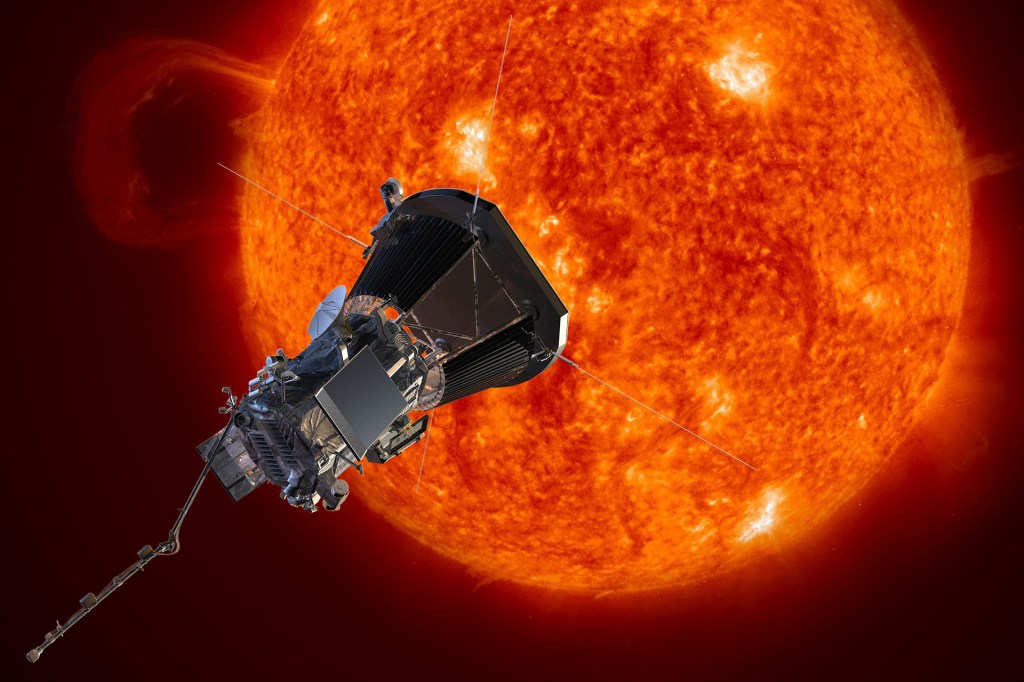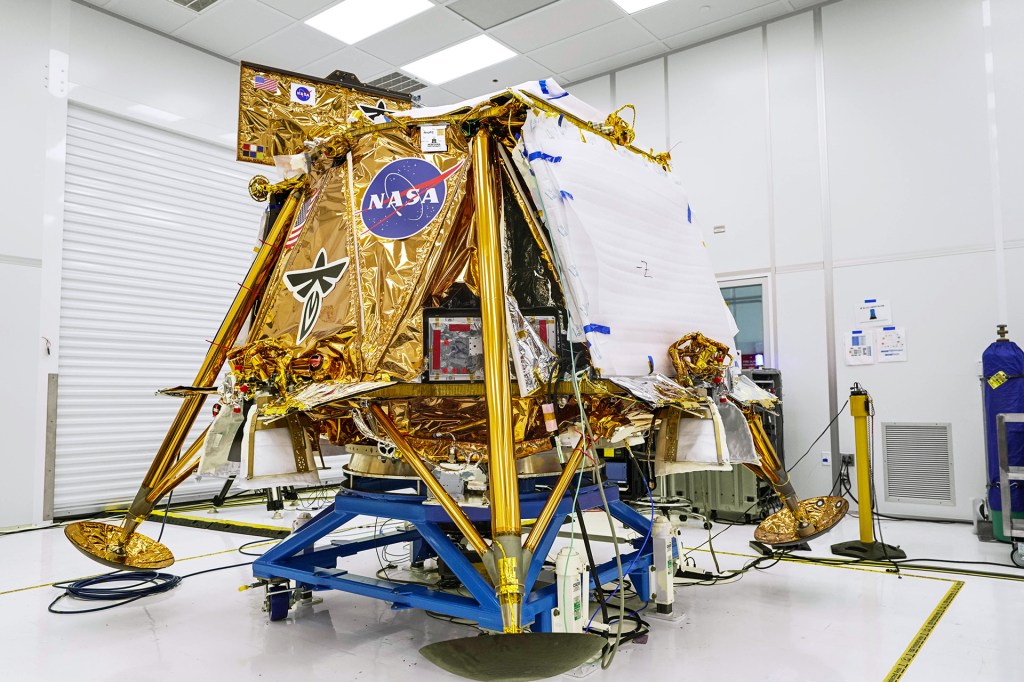Getting Close to the Sun

No spacecraft will ever land on the sun. The sun is a flaming ball of gas that reaches thousands of degrees Fahrenheit. But next year, a ship from Earth will fly closer to it than any man-made craft has flown before. The mission is a big development for scientists and, maybe, for everyone else.
In September 2018, NASA plans to launch the Parker Solar Probe. It will journey nearly 90 million miles. It will fly within 3.8 million miles of the sun. Within two months of launching, the probe is expected to reach the sun’s corona. That’s the sun’s outer atmosphere of fiery gases. The mission will provide new insights into our sun and other stars. The closest star system to ours is 24 trillion miles away. But the sun is just 93 million miles away. That is well within our reach.
A Speedy Journey
Getting there won’t be easy. Designing a spacecraft tough enough to hold up to the sun’s heat has proved difficult. But that hasn’t stopped engineers from trying.
After its launch, the unmanned
unmanned
 CHOMBOSAN/ISTOCK/GETTY IMAGES
not carrying a person
(adjective)
There is new technology to have an unmanned taxi pick you up.
probe will make seven flybys of Venus and use Venus’s gravity to edge closer to the sun. Ultimately, the ship will be so close to the sun that it will travel around it in just 88 days—a very quick trip compared with Earth’s 365 days.
CHOMBOSAN/ISTOCK/GETTY IMAGES
not carrying a person
(adjective)
There is new technology to have an unmanned taxi pick you up.
probe will make seven flybys of Venus and use Venus’s gravity to edge closer to the sun. Ultimately, the ship will be so close to the sun that it will travel around it in just 88 days—a very quick trip compared with Earth’s 365 days.
Temperatures in the corona can reach millions of degrees. The probe will limit itself to regions where things get no hotter than 2,500°F. That’s still a heavy heat load for a spacecraft. But a 4.5-inch-thick carbon-composite heat shield will protect the probe’s camera and scientific instruments. The shield will allow the equipment to operate at a comfortable room temperature. It will cost $1.5 billion to build, launch, and operate the probe.
Searching for Answers
NASA says the data the probe collects could provide insight into the physics of stars. Our sun is special to us. But as a star, it’s rather common. So the better we understand how it works, the better we understand all stars of its mass and color.
Perhaps most important is what the probe may reveal about solar storms. They can cause havoc
havoc
 RYAN J LANE—E+/GETTY IMAGES
destruction; confusion
(noun)
The toddler caused havoc by throwing food everywhere.
far beyond the sun. During solar storms, charged particles
particle
RYAN J LANE—E+/GETTY IMAGES
destruction; confusion
(noun)
The toddler caused havoc by throwing food everywhere.
far beyond the sun. During solar storms, charged particles
particle
 OATAWA/ GETTY IMAGES
a small piece of something
(noun)
I saw strange particles floating in my water.
stream through the solar system. They can disable communications satellites and shut down electrical grids. One study has revealed that a very intense solar storm could cause up to $2 trillion in damage in the U.S. alone. It could also black out the East Coast for a year.
OATAWA/ GETTY IMAGES
a small piece of something
(noun)
I saw strange particles floating in my water.
stream through the solar system. They can disable communications satellites and shut down electrical grids. One study has revealed that a very intense solar storm could cause up to $2 trillion in damage in the U.S. alone. It could also black out the East Coast for a year.
Understanding solar storms might allow us to predict them and protect ourselves. That could make even a mission with a billion-plus price tag one of NASA’s great bargains.












